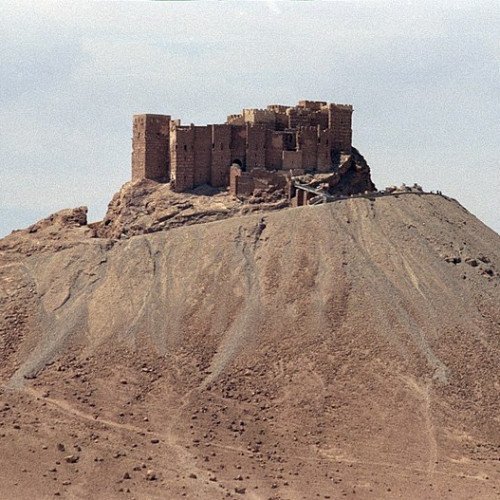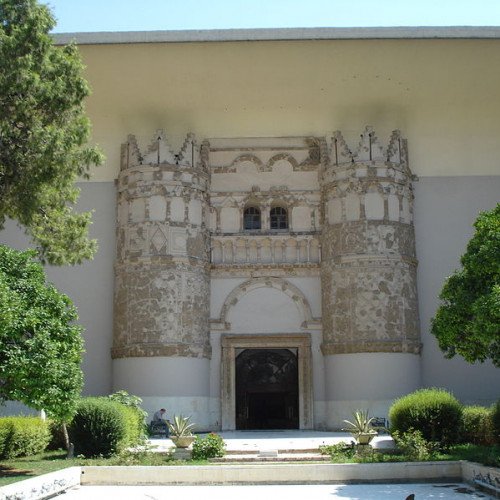Castles of "Syria" PALMYRA CASTLE vs QASR AL-HAYR AL-GHARBI

PALMYRA CASTLE
Palmyra Castle, also known as Fakhr-al-Din al-Ma'ani Castle (Arabic: قلعة فخر الدين المعني) or Tadmur Castle, is a castle overlooking Palmyra in the province of Homs, Syria. The castle is thought to have been built by the Mamluks in the 13th century on a high hill overlooking the historic site of Palmyra, and is named for the Druze emir Fakhr-al-Din II, who extended the Druze domains to the region of Palmyra during the 16th century. The site of the castle and Palmyra in 1980 became a UNESCO World Heritage Site in recognition of the monumental ruins of a great city, which was one of the most important cultural centres of the ancient world. The site was designated a national monument in Syria and a buffer zone was established in 2007. The castle lying on raised bedrock was a well defended position for a fortification with thick and high walls, which was also surrounded by a moat that had only one access available through a drawbridge. The historic site was placed on the list of World Heritage Sites in Danger in 2013 due to the ongoing Syrian Civil War. The castle was captured by the Islamic State of Iraq and the Levant during the Palmyra offensive in May 2015. It was recaptured by Syrian government forces in another offensive in March 2016. Retreating ISIS fighters blew up parts of the castle, including the stairway leading to the entrance, causing extensive damage. The basic structure is still intact, and Syrian director of antiquities Maamoun Abdelkarim stated that the damage is repairable and the castle is to be restored. The castle was captured by ISIL once again in December 2016. However, the Syrian Army captured it again after an assault on 1 March 2017.
Statistics for this Xoptio

QASR AL-HAYR AL-GHARBI
Qasr al-Hayr al-Gharbi (Arabic: قصر الحير الغربي) is a Syrian desert castle or qasr located 80 km south-west of Palmyra on the Damascus road. The castle is a twin palace of Qasr al-Hayr al-Sharqi, built by the Umayyad caliph Hisham ibn Abd al-Malik in 727 CE. It was built in the Umayyad architectural style. Qasr al-Hayr al-Gharbi is one of a number of Umayyad desert castles in the Syrian/Jordanian region. The site originally consisted of a palace complex, a bath house, industrial buildings for the production of olive oil, an irrigated garden and another building which scholars suggest may have been a caravanserai. Over the entrance is an inscription which declares that it was built by Hisham in the year 727, a claim that is borne out by the architectural style. It was used as an eye of the king during the Umayyad era, to control the movement of the desert tribes and to act as a barrier against marauding tribes, as well as serving a hunting lodge. It is one of the most luxurious examples of a desert palace. Later it was utilized by the Ayyubids and the Mamelukes but was abandoned permanently after the Mongol invasions. The castle is quadrangular in outline with 70-meter sides. The central doorway to the castle is very attractive and has been moved to the National Museum of Damascus to be used as the entrance. Its semi-cylindrical towers on the sides of the doorway, columns, and the geometric shapes mirrored a blend of Persian, Byzantine and Arab architecture. Little of the original castle remains; however, the reservoir to collect water from Harbaka dam, a bath and a khan are still visible. The gateway is preserved as a façade in the National Museum of Damascus.